I had been itching since long to cover these cultural gems of Karnataka. Belur and Halebid are two of the best examples of intricately beautiful Hoysala architecture ( other being the temples at Somnathpur and Talakadu ), while Shravanabelagola is an important centre for Jain pilgrimage.
These sites are a must-visit for anybody interested in history and art of times gone by. They make for an apt weekend trip, being around 250kms from Bangalore. Belur and Halebid are pretty close to each other, and a short deviation en-route leads to Shravanabelagola. If, however, you are up only for a 1 day trip to catch a glimpse of Hoysala workmanship, you can visit the aforementioned temples at Somnathpur and Talakadu ( 150 kms from Bangalore at a rough estimate ); but rest assured that there’s no match for the intricate designs of Belur and Halebid.
My opportunity came up during the long dussehra break, during which we had 4 long days to do whatever. I was in no mood to stay in the city after the first 2 days ( it surely is a waste, isn’t it !!! ), so I teamed up with some friends of mine for the trip. We were a gang of 4, including myself, a guy from our photography club, a college friend of mine, and a Dutch architect who I had met up on Couchsurfing, and who was interested in learning about temple architecture here in India ( Hello Prakhar, Ananta and Sjoerd ! ). It was a new gang for all of us, but it was a gang nevertheless !!!
We started off from Bangalore at around 7 am from my place. After picking up others, we headed straight up towards Tumkur Road. Traffic was sparse, so we had no difficulty in reaching the highway, and once there, we zoomed off after a light breakfast. We took the left turn after Nelamangala and on to the Hassan highway, after which there were no stops all the way, albeit for tolls. That, my friends, is an irritation not only because of the toll costs, but also because of the no. of toll points. They are pretty frequent and you would wonder why they won’t take payments up to Hassan in one go. And they slow you down so much so that I had a feeling that we were delayed for about half an hour at least.
We arrived in Hassan at around 12 o’ clock, and entered through the BM ( Bangalore Mangalore ) road, which has quite a few eating and lodging options ( You need to take a right turn from the highway as soon as you see the first direction-arrow for Hassan town ). After enquiring at a few hotels, we settled for hotel Kadamba ( http://www.tripadvisor.in/Hotel_Review-g503696-d1736454-Reviews-Kadamba_Comforts-Hassan_Karnataka.html ), which is a vegetarian option in itself, but has the more famous ( and pricey ) suvarna regency nearby, for non-veg fare and for a few drinks whenever you’re up for the same ! Our stay at kadamba turned out to be fairly decent, with good beds and a decent bathroom, and I guess I remember hot water too ! The service was not as great, and the person at the reception kept irritating us for paying the full amount in advance. Finally, we settled for half the amount !
I would like to mention that even though both belur and halebid are around 35-40 kms from Hassan, we decided to stay at Hassan for the following reasons:
- It was afternoon already by the time we reached Hassan, and were in dire need of a place to stay put and freshen up ourselves, and have some decent lunch too.
- Hassan is one of Karnataka’s main towns, and pretty much bigger than either Belur or Halebid. That meant decent places to stay in whatever budget you want, and pretty much good food. BM road is a good bet for all budgets.
- We had done our on-line search but we had not found economical lodging options in either Belur or Halebid. There are a few resorts but they are far from being budget options. There’ are Karnataka govt hotels in both belur and halebid, but it’s difficult to book in them on short notice, especially during long weekend breaks.
- It’s not too much of an ordeal to go to Belur/Halebid and get back to Hassan, as the road is pretty good, and Hassan has to be crossed anyway while getting back to Bangalore. Both places are in the same direction from Hassan, and if you have one full day ahead after reaching Hassan, you can cover both places in one go. This was not our case, however.
Ok, let’s move ahead with the blog now !
The usual done ( lunch, some rest and a bath included ! ), we were now ready go further to our first destination. We had our GPS and it was only time before we picked up our road to Belur. We were quite thankful for that as the roads inside Hassan town are horrible to say the least ( at least going by our experience on BM road ). Don’t be surprised if you encounter huge potholes that are nothing short of craters if you have a small car ( like mine ) ! However, once you are on the road to Belur, relax your legs as the drive becomes quite smoother. Do expect a few potholes here and there, but overall a pretty decent experience.
We were in Belur town after sometime, asking for directions to the temple ! As we were getting closer and closer to the temple, we could get an idea of the crowd, going by the no. of vehicles parked on both sides of the road. Having found a parking place for ourselves as soon as the temple ( gopuram ) came into view, we headed towards it.
The first thing that I noticed about the temple was that the gopuram ( entrance ) was flanked by a pretty long boundary on both sides. A pretty huge complex inside ! The other thing that I noticed was that the gopuram was being renovated, an iron mesh like structure surrounding it from all sides. So, we couldn’t take much of a pic of it. Never mind, we went inside. It was 4 o’clock but a bit hot ( this was in early october ) and we could see the sun in front of us, and behind the main temple. So, another learning: You should come to Belur as soon as you can in the morning, if you want good well-lit pictures of the temple-front ! It is the opposite at Halebid. This is a very important point so far as photography goes, so guys, KEEP THIS IN MIND !
As you enter the complex, you encounter a huge ‘stoney’ expanse, with the beautiful temple sitting in the middle. A few other structures appear on to the left, including ( as they say ) a replica of the original building ( not the same quality of engravings though ). There is a stepped-well to the right of the entrance. The main temple stands on a star-shaped platform, pretty typical of the Hoysala architectural style ( You can see the same structure at Somnathpur as well, but engravings there are not as detailed ). The temple is named ChennaKesava ( meaning ‘Handsome (Lord) Vishnu ), and was built 1000 yrs ago by the Hoysala king Vishnuvardhana after his victory over the Cholas at nearby Talakadu. Belur was the early capital of the Hoysala empire.
ChennaKesava Temple, Belur – Front
ChennaKesava Temple, Belur – Back
Govt. approved guides can be found in the temple premises, who will take you around it’s structure and explain some of the intricate carvings, accompanied by tales and anecdotes of those times gone by. They don’t charge much ( Rs. 250/- is what I remember ), and it can be an interesting experience for many, so I recommend taking their services. Once they are done ( an half hr session is what my guide gave me ), you can take your own sweet time and wander around inside the temple premises, admiring the beautifully carved out sculptures and friezes. You have warriors ready for and in various battle scenes, their womenfolk sending them away after prayers and aarti of sorts. And then you have scenes carved out to represent various tales that abound in the Hindu mythology. Last but not the least, you have beautiful carvings of various animals and birds. Oh, and I should not forget the dancers in various poses ( pretty detailed and quite a sensuous depiction I’d say ). It’s difficult to imagine their dresses have been carved out of rock. The 2 dvarpalakas ( doorkeepers ) at the temple entrance are quite famous because of their size as well as their decorations. The entrance also has the emblem of the Hoysala dynasty ( a huge lion ) attached to it. Not to forget the engravings on pillars inside the temple. And should I mention a tall pillar which has been carved out of a single rock, and has been placed on a platform such that it doesn’t require any other support. It has been stationed at it’s place for a few centuries now. 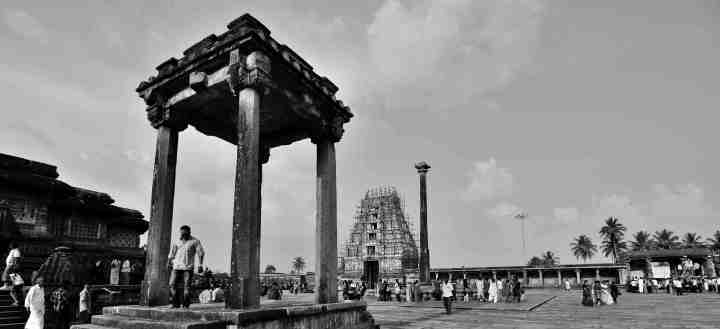 The temple gopuram ( entrance ) with a platform of sorts, in the foreground. Can you feel the vastness of the enclosure ? What stands in between is that single-stone pillar, without any support !
The temple gopuram ( entrance ) with a platform of sorts, in the foreground. Can you feel the vastness of the enclosure ? What stands in between is that single-stone pillar, without any support !
Even as the faithful walk towards the temple !
Ok , I think I have written enough and won’t say more because I can’t write down all my feelings here ! Visit the place and you will love it, especially if you love architecture and if you have not seen anything like it before. I spent a couple of hours taking in the scene in and around the temple, and clicking quite a bit of it. It was then that I joined my mates and we headed out to Hassan after a snack break. The rest of the evening was spent discussing the beauty of the temple over a few (customary) drinks at the nearby Suvarna Regency ! Food was good and we retired early in anticipation of our next day. We had our plans in place !
We had planned to be at Halebid early in the morning, to take advantage of the ‘photographic’ golden hour. We were, however, delayed and by the time we got ready and were done with our breakfast ( Kadamba hotel has a pretty decent vegetarian restaurant ), it was already past 9. It was a bright sunny day and we were in good mood nevertheless, so we whizzed past the town and on to the highway. The route to Halebid stays the same as that to Belur for some time, after which you have to take a right turn. The road stays a single-lane from thereon ( good quality though ), and it doesn’t take much time to reach the temple ( 45 mins from our hotel at Hassan ). You will, off course, enjoy the drive as well, even as the road winds it’s way past villages and greenery, and also traverses a few ups and downs just before the temple comes into view. At the very first instance, it appears bigger and more detailed than the temple at Belur, and yes it is ! 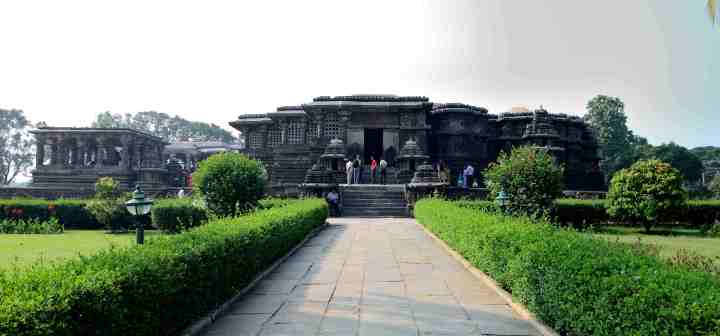
First glimpse of the Hoysaleswara temple, Halebid
A bit about Halebid even as we are about to enter the temple ! Locally, this place is called ‘Halebeedu’, which means ‘old city’. This name was given to the city after it’s ransacking by armies of the Delhi Sultanate in the early 1300s ( original name: Dwarasamudra. There’s supposed to be a huge lake somewhere nearby, hence that name. I did not notice it, however. ) . This place was also the capital of the Hoysala kingdom during that time, and large no. of temples have been attributed to the dynasty ( only very few of them survive and are famous today ). Halebid has 2 such famous temples to it’s name. The ( main ) temple that we are about to enter is the Hoysaleshwara temple, while the other smaller one is called the Kedareshwara. Similar architecture but smaller in size, and not as detailed. After seeing such detailed art-work in the Hoysaleshwara temple, it is difficult to believe that this structure could not be completed !
I guess it was still a bit early so far as temple timing goes, because even as we entered it’s premises, it looked as if the temple had just opened and the crowd was just beginning to pour in ( pretty thin though ). It was around 10 o’clock then, and I had noticed by now that the sun was behind the temple again. As I mentioned before, this has to be remembered by all those who go there for a photography trip. Be there during the evening ! This temple stands on a platform again, in true Hoysala style, but this platform is a bit bigger than the one at Belur, and with a different shape as well. Accordingly, the temple structure is bigger too, and with much more intricate carvings. I must also say that the carvings are better preserved here, which was difficult to believe again, after hearing about the ransacking that was meted out to this wonderful place of art.
Beautiful carvings all over the temple walls, Halebid
Hoysaleswara Temple – Back
The temple interiors, once again, consist of ornately carved out pillars in the true hoysala style. Lot of space inside , quite a few shrines, and pretty cool as well compared to the hot exterior. After spending an entire morning here ( encircling the temple quite a few times to admire the carvings, and not to leave out any clicking opportunities ! ), we headed back to Hassan, but not before visiting the nearby Kedareshwara temple ( much smaller but with absolutely no crowd. The temple was closed though. ) and a Jain basadi ( temple again, pretty rich in it’s decorations as is the norm here ! ). The crowd at the main temple had increased quite a bit by now, as could be seen from the no. of vehicles parked outside. We were happy that we were among the early visitors !
Inside the Jain ‘basadi’, Halebid
The Kedareswara temple, abode of Lord Shiva, Halebid
The ‘hot’ drive back to Hassan over, we packed up our bags from the hotel and checked-out. After having our last meal there ( accompanied by drinks for all but the driver, me !!! ), we were back on the highway, on our way back to Bangalore, a stop en-route at Shravanabelagola beckoning us already !
Driving up on the highway, we missed our first turn towards that place, but caught the second one to the right from the highway. A nice drive for half an hr or so, and we were inside the town and on our way towards the Vindhyagiri hill there.
Let’s talk about the town for a bit, before we proceed ahead ! This place is a very important centre for Jains and it’s history is more than 2000 years old by now. The famous king Chandragupta Maurya converted to Jainism, did meditation and died as an ascetic here. The name of the town refers to a pond ( belagola ), which sits at the foot of one of the two hills. The bigger/taller of the two is Vindhyagiri, while the other one is called Chandragiri. Vindhyagiri ( and the town indeed ) is famous for a very tall statue ( 58 feet ) of Gommateshvara ( Bahubali ), a king who renounced his worldly possessions and is believed to have received his enlightenment here. He’s an important personality in the Jain faith, that’s all I can vouch for at the moment ! The statue itself is more than 1000 yrs old, and had been commissioned during the rule of the Ganga dynasty in these regions. The Chandragiri hill, on the other hand, has a basadi ( temple ) dedicated to Chandragupta, and attributed to king Ashoka.
Vindhyagiri, as I mentioned earlier, is a huge tall rock and the statue ( including a few other temples ) is on top off course, so we had to climb up the steep face of that rocky hill ( around 600+ stairs I guess, but I’m not sure ). To add to your pleasures, the trek has to be made barefoot. Quite exciting I would say, and quite tiring too ! Initially, a few amongst us had our doubts, but eventually, all of us ( our Dutch mate included ) decided to give it a go ! I had to make a few pit-stops along the way, but I used them to my advantage by checking out the view of Chandragiri from therein, and clicking it too. Both the hills face each other for that matter. It was late evening and light was beginning to fade already, so I decided to make the most of my views while I had it sufficiently. All along my way, I met fellow climbers who were making their way up at their own pace, as also people coming back ( some making use of the smooth rock face to slip down for a bit ! ). You also need to make way for the bearers who would be carrying elderly people ( and those who want that luxury anyway ! ) in their measured and synchronised ( and pretty fast ) stride. News for people who would not like to climb up the hill ! Yes you can pay your way through, and yes it’s not much !
These stairs reach all the way to the top !
That gate’s only gonna deceive you …. You need to climb more even after you cross it !
Once you reach the top, you have a few smaller temples to visit before you enter the main enclosure. As soon as you enter that enclosure, you encounter the tall statue directly ahead of you in the courtyard. The top of the statue is visible from outside the enclosure as well, and that gives you a perspective too for your shoots ! Cameras go click, click as soon as you encounter the statue, trying to capture it from all angles possible ! And then you can go closer and capture the king’s huge feet, and do some street photography ( the priest and the devotees ). I certainly had a good time, and clicked along to my heart’s content. Guess it was time to close the temple after a while, even as I picked up my stuff and made my way out along with the already thinning crowd. I was happy that the main feat was achieved in time even as the light was diminishing around us !
This is what all of us came here for, the 58 ft. high statue of King Bahubali
View of Chandragiri hill and the town, along with the pond which gives it it’s name; all of it from some way up the Vindhyagiri hill
My attention went straight to Chandragiri hill now, and I descended as fast as I could ! The temple there had already closed by the time we reached it’s top ( The climb here is pretty easy ), but I still managed to click some views of the Vindhyagiri hill from the various ‘vantage’ points. I was a bit disappointed since this temple is a very old one too ( commissioned by Ashoka ), but overall, given the time in hand, I think we did a good job. If you have to pay a leisurely visit to both the hills, however, I advise you to leave aside a day for Shravanabelagola. Afternoons are really hot here, so the ideal plan would be to cover one hill in the morning, and the other in the evening. Rest of the time can either be utilised to rest, or to roam around in the town’s streets, where you will come across numerous small jain temples ( so I’ve read ).
A last one, the Vidhyagiri hill from up the Chandragiri. Can you see the line of devotees trying to make their way up, to that statue ( face seen ) on the upper right corner ? Bluish tint in this pic is due to the evening light.
Anyway, flush with the satisfaction of making the most out of our trip ( Belur and Halebid were covered pretty leisurely. Shravanabelagola was a bit of a haste only towards the end ! ), we now headed on to the highway and on towards Bangalore. It was an uneventful drive until it start pouring heavily somewhere on the way. Given the traffic on this highway after long weekends, I knew we had a sour experience in store for us. Truly, there were long queues at every toll plaza ( there are quite a few ), while the last leg where Hassan highway joins Tumkur highway, was hell ! We were stuck on a few kilometres stretch for at least 45 minutes. It threw all our time planning out of gear, and in the end, all of us simply wanted to get home as soon as possible. It was around midnight that we grabbed our food from one of the very few eateries that are open around that time, and then each of us rushed home, saying good-byes as fast as we could !
All in all, a very nice trip barring the last few hours of shitty traffic ( as put by Sjoerd and agreed upon by all of us ! ).
I hope you enjoyed this read about our journey into the heart of Karnataka’s cultural treasure trove. Please do let me know if you guys need any specific info !
More pictures here: https://www.facebook.com/raj.abhishek/media_set?set=a.10152937703504761.1073741836.667394760&type=3
Short and sweet itinerary, with only the needed info: http://www.tripoto.com/trip/cultural-indulgence-at-belur-and-halebid-6479
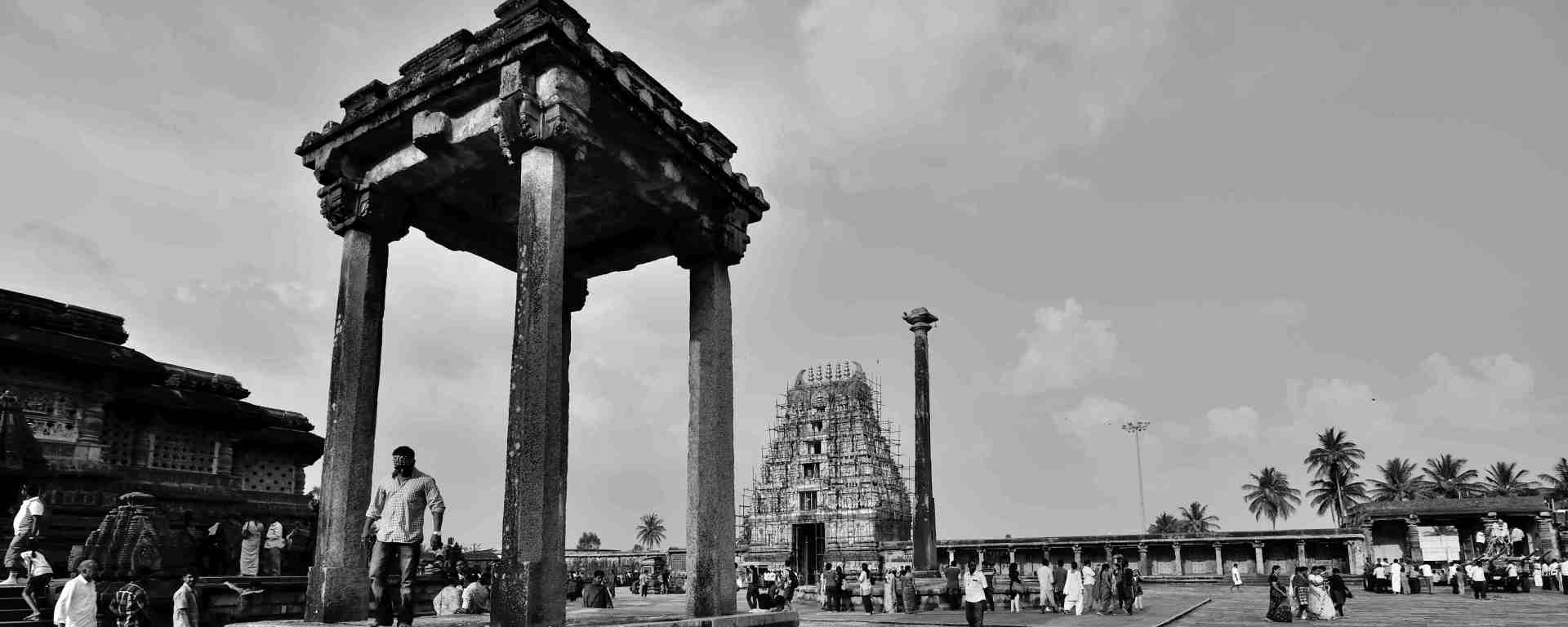
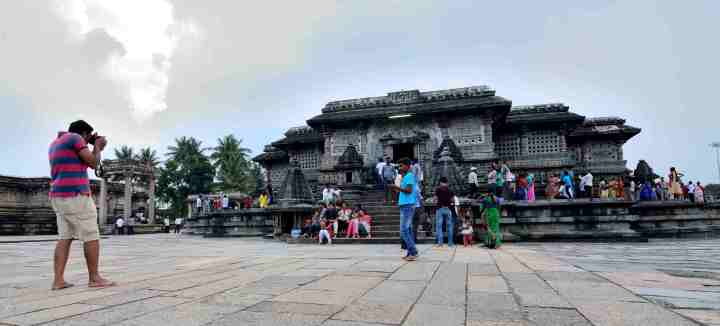
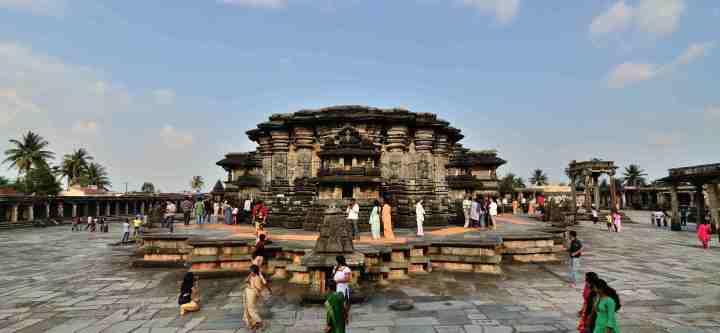
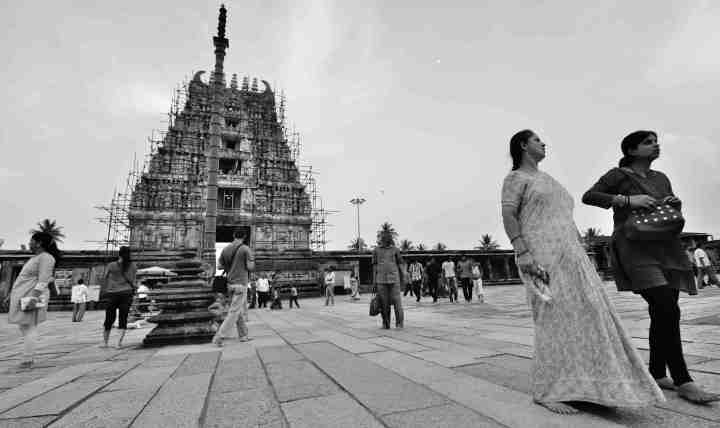
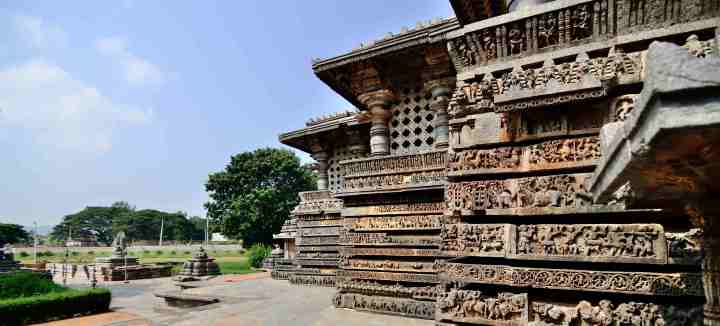
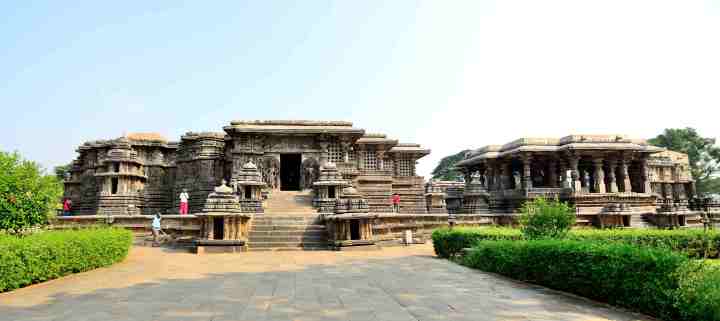
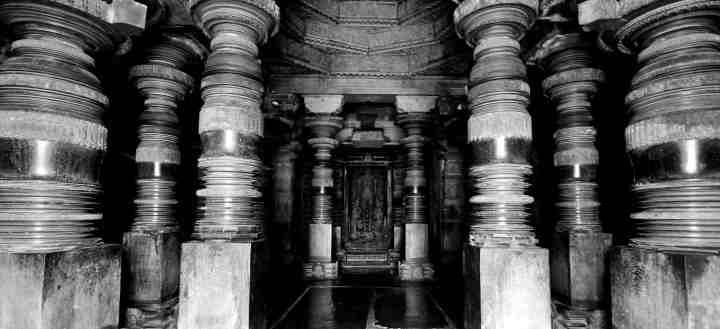
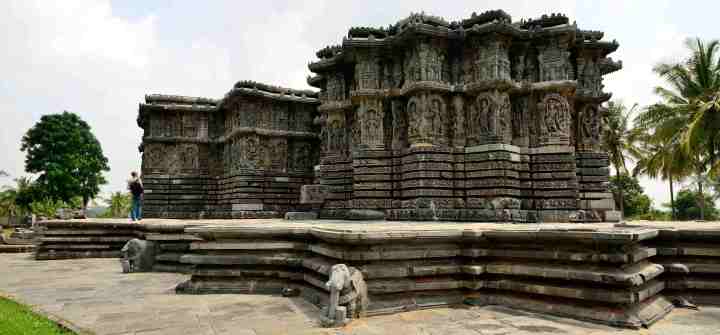
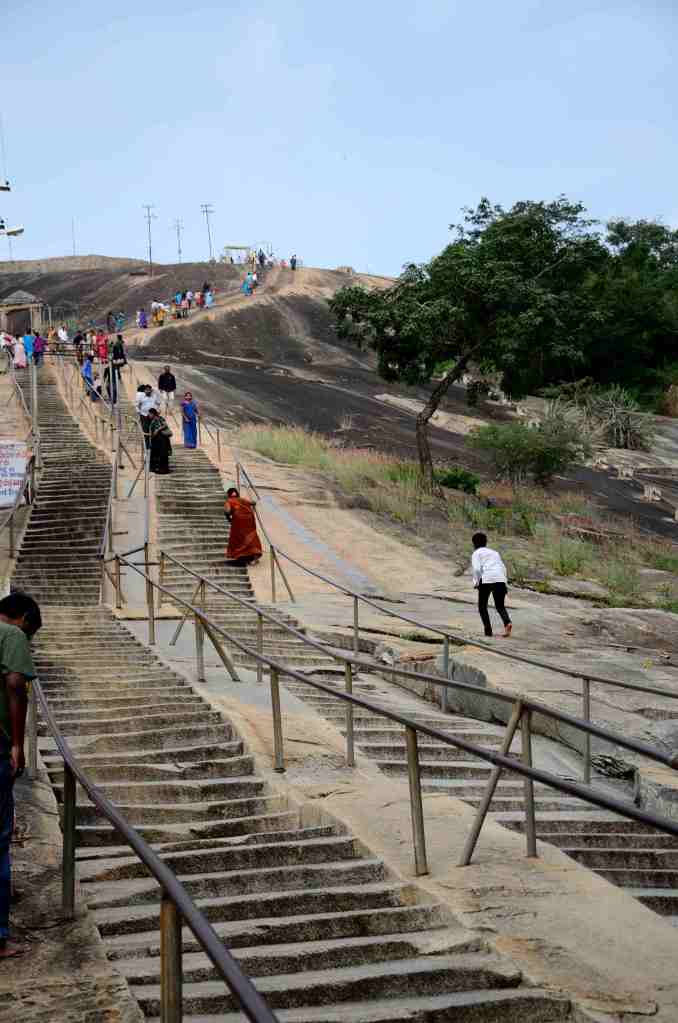
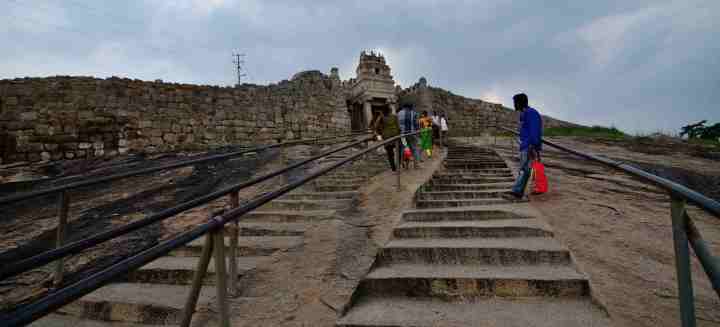
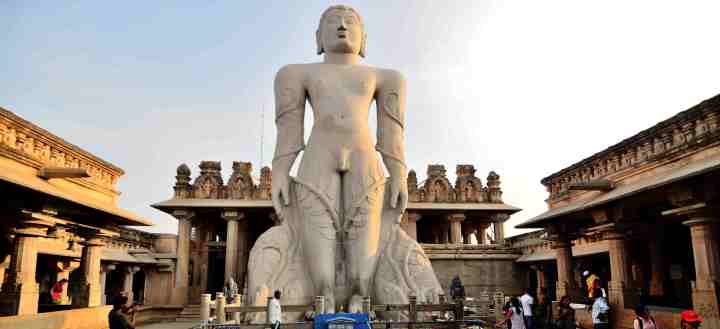
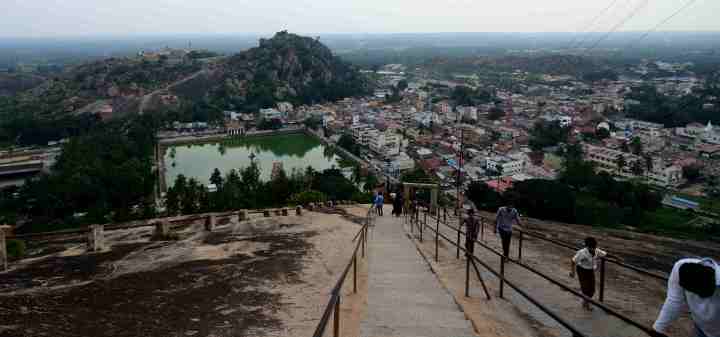
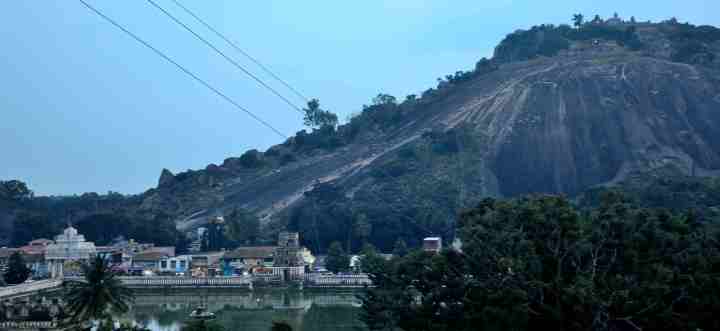
Nice story about our trip, Raj! And some beautiful pictures as well. Only one remark: I am a Dutch architect (not Danish) ;). Keep me posted about next trips, if I have the opportunity I would like to join in. Take care,
Sjoerd
LikeLike
Thanks for the correction Sjoerd … I have incorporated the same .. and yes, I will surely let you know when I plan my next trip ( Planning for Hampi or Badami … again, temples from this part of the country ) …
LikeLike
nice article.. well detailed.. thanks
LikeLiked by 1 person
Thanks Jay !
LikeLike